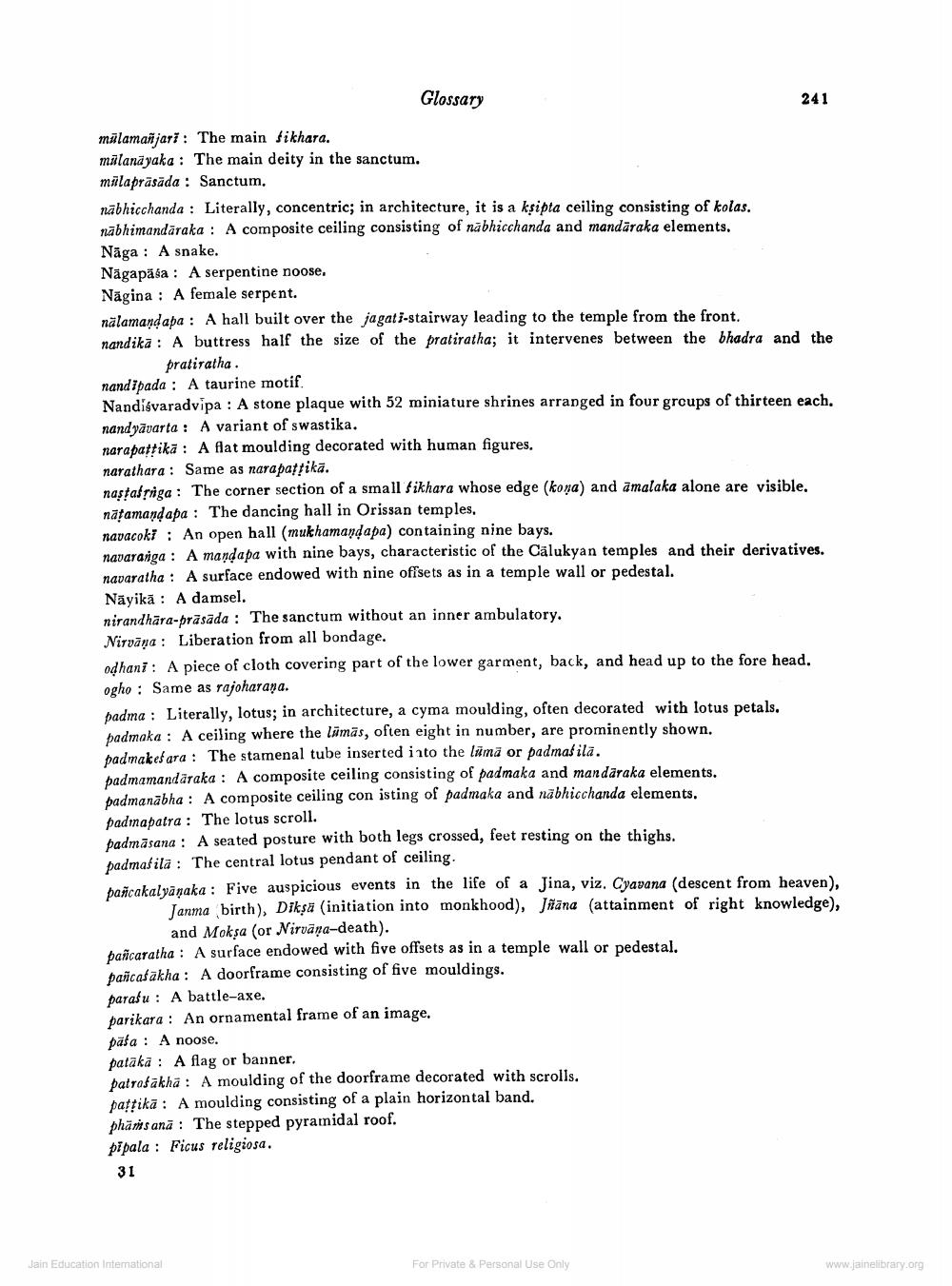________________
Glossary
241
mālamaijari : The main Sikhara. malanäyaka : The main deity in the sanctum. malaprāsāda: Sanctum. nābhicchanda : Literally, concentric; in architecture, it is a ksipta ceiling consisting of kolas. nābhimandāraka : A composite ceiling consisting of nābhicchanda and mandāraka elements, Nāga: A snake. Nägapäsa: A serpentine noose. Nägina : A female serpent. nālamandapa: A hall built over the jagat i-stairway leading to the temple from the front. nandika : A buttress half the size of the pratiratha; it intervenes between the bhadra and the
pratiratha. nandipada: A taurine motif. Nandisvaradvipa : A stone plaque with 52 miniature shrines arranged in four groups of thirteen each. nandyāvarta: A variant of swastika. narapattika: A flat moulding decorated with human figures. narathara : Same as narapattikā. nastalţiiga : The corner section of a small fikhara whose edge (kona) and amalaka alone are visible. nafamandapa: The dancing hall in Orissan temples. navacoky : An open hall (mukhamandapa) containing nine bays. navarajga: A mandapa with nine bays, characteristic of the Calukyan temples and their derivatives. navaratha: A surface endowed with nine offsets as in a temple wall or pedestal. Nāyikā : A damsel. nirandhara-prāsāda: The sanctum without an inner ambulatory. Nirvāṇa : Liberation from all bondage. odhani: A piece of cloth covering part of the lower garment, back, and head up to the fore head. ogho : Same as rajoharaṇa. badma : Literally, lotus; in architecture, a cyma moulding, often decorated with lotus petals. padmaka : A ceiling where the lāmās, often eight in number, are prominently shown. padmakes ara: The stamenal tube inserted into the limä or padmašila. padmamandaraka : A composite ceiling consisting of padmaka and mandāraka elements. padmanabha: A composite ceiling con isting of padmaka and nabhicchanda elements. padmapatra : The lotus scroll. padmāsana: A seated posture with both legs crossed, feet resting on the thighs. padmašila : The central lotus pendant of ceiling. bacakalyanaka: Five auspicious events in the life of a Jina, viz. Cyavana (descent from heaven).
Janma birth), Diksa (initiation into monkhood), Jiāna (attainment of right knowledge),
and Moksa (or Nirvāṇa-death). paflcaratha: A surface endowed with five offsets as in a temple wall or pedestal. pañcafakha: A doorframe consisting of five mouldings. parafu : A battle-axe. parikara : An ornamental frame of an image. paba: A noose. pataka : A flag or banner, patrafakha: A moulding of the doorframe decorated with scrolls. paffika: A moulding consisting of a plain horizontal band. phänsana: The stepped pyramidal roof. pipala : Ficus religiosa. 31
Jain Education Interational
For Private & Personal Use Only
www.jainelibrary.org




